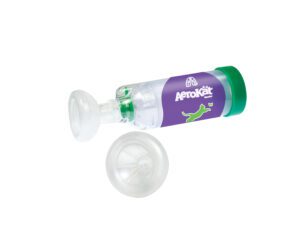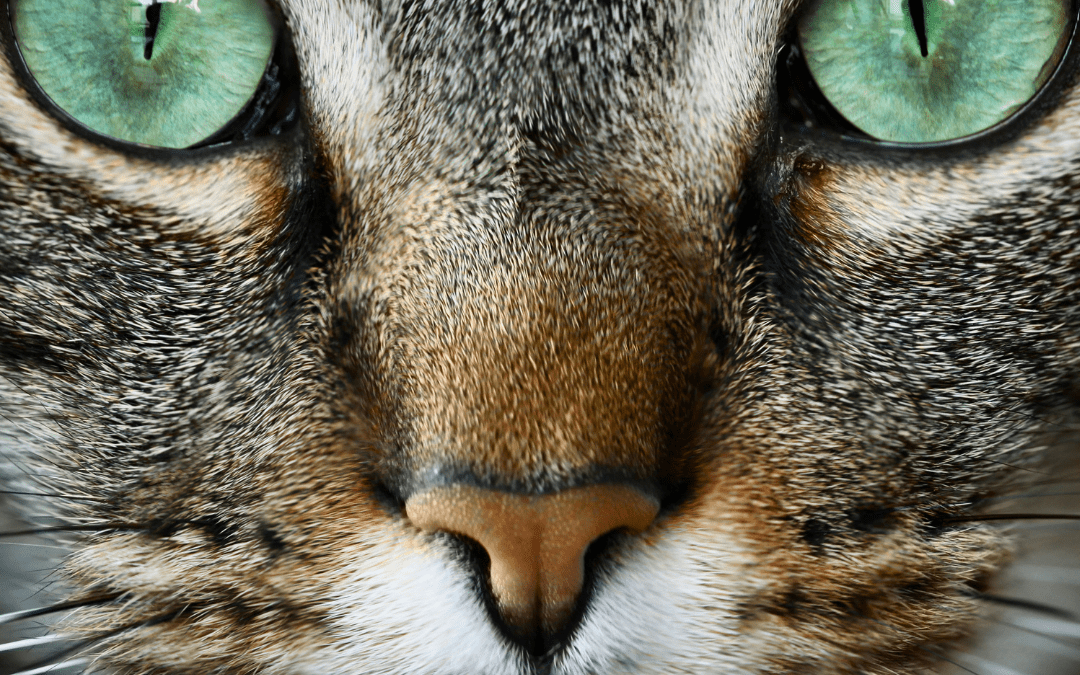Dr Sarah-Jane Molier BSc BVM&S MRCVS
Just like humans, cats can suffer from asthma, and cat inhalers can form an important part of treatment. However, it’s vital that you only give your cat medication that has been prescribed by your vet, for many reasons. Let’s look at why you should never use your own inhaler on your cat.
How to treat asthma in cats
Feline asthma causes bronchoconstriction (narrowing) and inflammation (swelling) in the lower airways. The mainstay of treatment for <cat asthma> is corticosteroids (also known as steroids). These act to reduce the inflammation in the airways, making the airways more open and allowing your cat to breathe more easily. Steroids can be given by mouth (orally), as an injection, or via inhalation (breathing in).
Treatment usually also involves bronchodilators, which act to dilate (widen, or relax) the airways. They do not address the inflammation, which causes many of the symptoms of asthma, so are not suitable as a treatment on their own. They are often used alongside steroids, especially during asthma attacks, so tend to be used as and when needed.
Are cat inhalers better for treating feline asthma than medication by mouth?
There are definite benefits to inhaled medication. Inhaled medication delivers a higher concentration of the drug to the area of the body where it is needed, i.e. the lungs. This means lower doses are often needed for the same effect and side effects are minimised, or even avoided. When the drug is inhaled, it also gets to work faster than if the drug is given by mouth.
Medication by mouth or injection also plays an important part in treating feline asthma, especially when a cat is first diagnosed. If a cat was suffering from an acute asthma attack, they would usually be treated with injectable medicine at the vets. They may then be given medication to take at home by mouth while they stabilise. This also allows time for the owner to train their cat to accept the inhaler. While this takes patience and lots of practice, most cats will learn to accept an inhaler.
Are cat inhalers the same as human inhalers?
The actual inhaler prescribed for cats is a human inhaler, as there are none specifically produced for cats. However, not all human inhalers are suitable for use in cats, and some may even be dangerous. For example, dry powder inhalers are not suitable for cats. You must never give your cat any medicine or drug that has not been prescribed by your vet.
In addition, the way we give inhaled medicine to a cat is slightly different. In humans, metered dose inhalers (MDIs) are designed to deliver the right amount of drug to the right place (the lungs) during a slow, deep breath. Naturally, we cannot tell our cats to take a slow deep breath! This means that if we just used an inhaler with a face mask, most of the medication would end up in the back of the throat. To avoid this we use a spacer, much like in children with asthma.

What kind of inhaler is best for feline asthma?
Only your vet can decide, and prescribe, which cat inhaler is best. The most commonly prescribed inhalers for cats contain either fluticasone (a steroid) alone or fluticasone with salmeterol (a long-acting beta-2 adrenergic agonist, which acts as a bronchodilator). One of these inhalers is usually used daily to keep inflammation under control, therefore controlling symptoms and preventing (or at least reducing) flare-ups. A salbutamol inhaler may also be prescribed, but only alongside one of the steroid inhalers. Salbutamol is a short-acting beta-2 adrenergic agonist, so it is used as a bronchodilator (to open up the airways) during a flare-up (an ‘asthma attack’). Salbutamol is not suitable as a treatment on its own in cats.
These inhalers come as metered dose inhalers (MDIs), so when using them in cats we need to add a spacer, or inhaler chamber, and a face mask. The spacer is a plastic tube, a bit like a plastic toilet roll tube. The face mask attaches on one end and the MDI attaches on the opposite end. When you press the MDI, the medication is released into the spacer, which acts as a storage area. This means you can press the inhaler, releasing the medication into the spacer, before you put the mask onto your cat’s face. The noise of pressing the MDI is often frightening for cats, so a spacer will help your cat to accept the inhaler.
So, why is it best to use spacers and face masks designed for cats, rather than humans? Well, firstly, the mask needs to form a good seal around your cat’s nose and mouth, but must not cover their eyes. Naturally, a mask specifically designed for a feline face will provide the best fit, optimising drug delivery. There should be a one-way valve, meaning medication is directed to your cat when they inhale, and cannot pass back into the spacer.
Not all inhaler chambers are designed equal! Naturally, unlike humans cats won’t know to take a deep breath, so it’s important that the valve is sensitive enough to respond to shallow breaths, allowing the medication from the spacer to the mask when needed. A mechanism which allows you to see when your cat is breathing in the medication is a valuable feature since it removes the element of guesswork from giving your cat their medication.
Together, a well-fitted mask, a one-way valve and an inhalation indicator enable you to be sure that your cat has actually inhaled their medication. Without them, if your cat isn’t improving, you can’t be sure if the medication isn’t working, or if your cat is simply not receiving the prescribed dose. You may also be spending good money on cat inhalers, only for a large volume to be wasted through an inefficient system. It’s worth investing in an efficient system, as it will save you money in the long run.
Final thoughts
Learning that your cat has asthma can be daunting. Luckily, most cats diagnosed with asthma can be well managed with long-term medication. This often involves the use of one or more cat inhalers. While your initial reaction may be that your cat would never allow that, most cats will actually learn to accept an inhaler, if it is introduced correctly with plenty of positive re-enforcement. An efficient spacer (or inhaler chamber) and mask are essential to ensure that your cat learns to accept the inhaler and that the prescribed inhaler is effective.
For more information on the AeroKat visit AeroHub – BreathEazy

